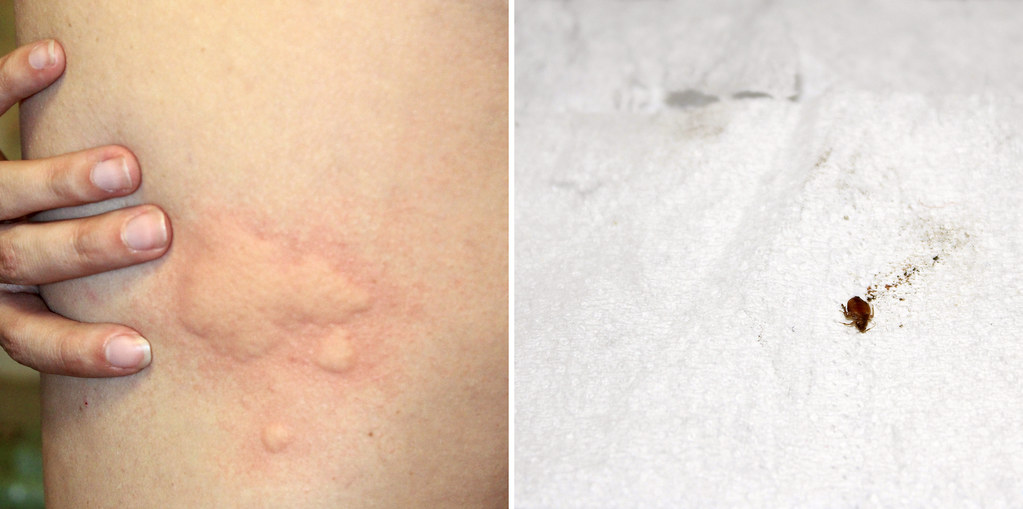Do you have bed bugs? The early warning signs.

Are you worried that you may have bed bugs in your home? There are many warning signs of an infestation in the home. Here are the top four signs of a bed bug infestation in the home.
Reddish, rusty OR black color spots and stains on the mattress and sheets:
The first thing you may notice are odd stains on your mattress and bedding. These reddish stains come from bed bugs that have been accidentally crushed, especially by restless sleepers!
Did you happen to notice a dark stain, often appearing like a black ink splotch the size of a dot? These are likely bed bug fecal marks, ranging from deep brown to black. The stains are usually clustered around harborage areas – in bed seams, box springs, and even sheets or pillow casings. These stains are much smaller and darker than the markings left behind by crushed bed bugs, so remember color and size matters!
Small itchy red bumps that appear on the hands, arms and legs, sometimes in clusters of 3 or 4:
Bites typically appear on the skin where it’s exposed the most. Beware, wearing long sleeves and pants won’t stop bed bugs from having their meal. Bed bugs are considered nocturnal insects, meaning they prefer to feed on blood at night while we sleep. But don’t be fooled! Bed bugs can and will quickly adapt to a host’s sleeping schedule. The bloodthirsty insects will feed during the day and with the lights on (they’re not shy).
Side note: bites alone are not enough to diagnose a bed bug problem. Everyone reacts differently to bed bugs bites and skin irritation. There’s no definitive way to distinguish a bed bug bite from another type of insect bite. Not to mention, 30% of people don’t show ANY skin reaction to bed bug bites. Fortunately, bed bug bites aren’t typically dangerous, and they do not transmit any known illness or disease.
Eggs, Eggshells, and Exoskeletons:
As bed bug infestations quickly grows, they will leave behind eggs, eggshells, and exoskeletons – a reliable indicator of an infestation. The number of eggs and skin sheds left behind can be enormous, as they produce skin sheds 5 times before reaching adulthood. Be on the lookout for eggs that have a milky white appearance similar to a grain of rice, but much smaller measuring at only 1mm in length. Eggs can be difficult to find in initial stages of infestation unless you are an expert. Like the black and red stains, it’s more common to find eggs and eggshells around harborage areas.
Live Bed Bugs:
The most apparent sign is live bed bugs. Bed bugs will normally stay in their safe, familiar harborage unless they need to feed or pregnant females are attempting to avoid males. When they do decide to move, they will travel 5-20 feet from harborages to feed on a host. Feedings can take between 3-12 minutes. Since bed bugs normally stay hidden, many people never see live bed bugs until the population increases in severity.
Each stage of bed bug development needs at least one blood meal, and they can feed more than once during each stage before molting. Females can lay 1 to 3 eggs per day, and 200-500 eggs per lifetime. To make matters worse, it only takes 4-5 weeks for a newly laid egg to start laying its own! So if you have any suspicion of bed bugs lurking in your home, contact an expert for assistance.
Looking for an affordable beg bug exterminator? Contact SMART Exterminators today! We have extensive experience in managing bed bug infestations and offer the most up to date treatment methods and best practices in the greater Cleveland, Ohio area.



